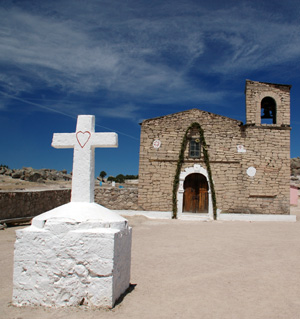 Jesuit
missionaries have a storied history in Mexico’s Copper Canyon.
From the 16th century to the present, their influence has
shaped the culture of the native Tarahumara who call the rugged mountains
their home.
Jesuit
missionaries have a storied history in Mexico’s Copper Canyon.
From the 16th century to the present, their influence has
shaped the culture of the native Tarahumara who call the rugged mountains
their home. “Jesuit” is the name given to members of the Society of Jesus, a Catholic order founded in 1534 by St. Ignatius of Loyola. Their desire to serve God and the Pope through education and missionary work brought them to New Spain, now Mexico, in 1572.
Father Juan Fonte established the first mission pueblo among the Tarahumara in 1611 and implemented the Jesuit policy of reducción, or reduction, designed to Christianize and “civilize” native peoples by bringing them into concentrated communities. Formerly, the Tarahumara lived in isolated homesteads dispersed throughout the wild mountains and canyons.
The Jesuits introduced the Tarahumara to irrigation, the plow, the axe, new crops and domesticated animals—advancements that radically altered their subsistence farming lifestyle.
As with most stories of colonization, while the missionaries brought many welcome advancements to the natives, their contributions were not always beneficial. In their minds they were doing the Lord’s work, “saving” the “wretched Indian souls,” and many times this took on a violent hue as they enlisted the assistance of the military to force the Tarahumara into salvation. Beyond this, however, the most damaging elements to the Tarahumara were not the Jesuits themselves, but the settlers who followed them.
The discovery of valuable mineral resources in the Copper Canyon area prompted an influx of Spanish settlers looking to dig their fortunes from land inhabited by the Tarahumara. The mines needed people to work them, and the newly concentrated Tarahumara provided an easily organized workforce that verged on slavery. The Jesuits were often the only obstacles to their total exploitation. In addition, the Spanish brought with them European diseases that caught the native population unguarded.
The Spanish encroachment, by missionaries and settlers alike, led many Tarahumara to abandon the pueblos and move into increasingly rugged country, making it difficult for the Spanish to exercise control over them. Epidemic diseases swept through the pueblos and decimated the population. This and the treatment they received in the mines led to uprisings that resulted in the deaths of many priests and soldiers, and brutal military responses that killed thousands of Tarahumara. In the end the Tarahumara abandoned violent action for the isolationism that defines their culture today.
The Jesuits continued their work until 1767, when King Charles III of Spain expelled the order from all Spanish territories. Monks from the Franciscan order took their place, but their work lacked the intensity of the Jesuits’. The Jesuits returned in 1900, and set about reopening missions and establishing schools, orphanages, hospitals and clinics.
One of the most influential Jesuit priests during modern times was Father Luis G. Verplancken, who worked for over 50 years to help the Tarahumara community. In 1965 he established a clinic in the town of Creel, where he faced a staggering infant mortality rate of 75%. It provided the only hospital services for miles, and to this day Tarahumara walk for days to Creel to seek medical attention. Father Verplancken organized Tarahumara craft-making to raise money for the clinic, drilled wells, built schools and brought fresh water and electricity to Creel. The Tarahumara lost a tireless friend and ally when Father Verplancken died in 2004.
The Jesuit missionaries who came to this area of Mexico brought with them both welcome and unwelcome elements of the "Old" World. The relationship between the priests and the Tarahumara helped shape the rich tapestry of Mexico. They had an indelible impact on Tarahumara culture that visitors to the Copper Canyon can witness to this day.
Click Here for information on our Copper Canyon Tours.


